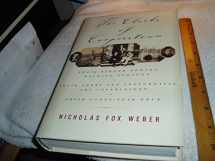
The Clarks of Cooperstown: Their Singer Sewing Machine Fortune, Their Great and Influential Art Collections, Their Forty-Year Feud
Book details
Summary
Description
Nicholas Fox Weber, author of the acclaimed Patron Saints (“Exhilarating avant-garde entertainment”—Sam Hunter, The New York Times Book Review) and Balthus (“The authoritative account of his life and work”—Michael Ravitch, Newsday), gives us now the idiosyncratic lives of Sterling and Stephen Clark—two of America’s greatest art collectors, heirs to the Singer sewing machine fortune, and for decades enemies of each other. He tells the story, as well, of the two generations that preceded theirs, giving us an intimate portrait of one of the least known of America’s richest families.
He begins with Edward Clark—the brothers’ grandfather, who amassed the Clark fortune in the late-nineteenth century—a man with nerves of steel; a Sunday school teacher who became the business partner of the wild inventor and genius Isaac Merritt Singer. And, by the turn of the twentieth century, was the major stockholder of the Singer Manufacturing Company.
We follow Edward’s rise as a real estate wizard making headlines in 1880 when he commissioned Manhattan’s first luxury apartment building. The house was called “Clark’s Folly”; today it’s known as the Dakota.
We see Clark’s son—Alfred—enigmatic and famously reclusive; at thirty-eight he inherited $50 million and became one of the country’s richest men. An image of propriety—good husband, father of four—in Europe, he led a secret homosexual life. Alfred was a man with a passion for art and charity, which he passed on to his four sons, in particular Sterling and Stephen Clark.
Sterling, the second-oldest, buccaneering and controversial, loved impressionism, created his own museum in Williamstown, Massachusetts—and shocked his family by marrying an actress from the Comédie Française. Together the Sterling Clarks collected thousands of paintings and bred racehorses.
In a highly public case, Sterling sued his three brothers over issues of inheritance, and then never spoke to them again.
He was one of the central figures linked to a bizarre and little-known attempted coup against Franklin Delano Roosevelt’s presidency. We are told what really happened and why—and who in American politics was implicated but never prosecuted.
Sterling’s brother—Stephen—self-effacing and responsible—became chairman and president of the Museum of Modern Art and gave that institution its first painting, Edward Hopper’s House by the Railroad. Thirteen years later, in an act that provoked intense controversy, Stephen dismissed the Museum’s visionary founding director, Alfred Barr, who for more than a decade had single-handedly established the collection and exhibition programs that determined how the art of the twentieth century was regarded.
Stephen gave or bequeathed to museums many of the paintings that today are still their greatest attractions.
With authority, insight, and a flair for evoking time and place, Weber examines the depths of the brothers’ passions, the vehemence of their lifelong feud, the great art they acquired, and the profound and lasting impact they had on artistic vision in America.


We would LOVE it if you could help us and other readers by reviewing the book
Book review




